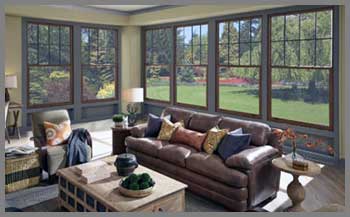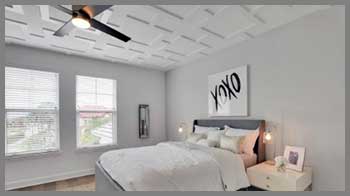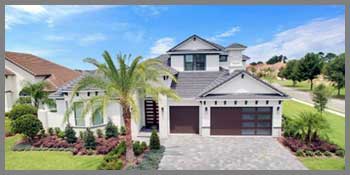
I’m thrilled to share why the PGT 5400 Series windows are a must-have for your home, especially if you live in a storm-prone area like Florida.
These windows blend durability, energy efficiency, and sleek design, making them a worthy investment. I’ve lived with them for over a year, and they’ve transformed my home’s comfort and security.
In this article, I’ll take you through my personal experience, break down the pros and cons, share maintenance tips, compare them to other brands, and answer common questions.
Trust me, you’ll want these windows for your next upgrade.
My Experience With PGT 5400 Series Windows
When I decided to replace the aging aluminum windows in my Central Florida home, I was on a mission to find something that could handle hurricanes and cut my energy bills. My 1990s house had single-pane windows that rattled in storms and turned my living room into an oven.
After weeks of research and contractor meetings, I chose the PGT 5400 Series from their EnergyVue line. The decision wasn’t just about specs—it was about peace of mind in a state where storms are a way of life.
The installation was a breeze. My contractor, a PGT specialist, helped me pick bronze frames to match my home’s exterior and low-E glass for energy savings. Over two days, a crew of three installed 12 windows, leaving no mess behind. The contoured vinyl frames instantly upgraded my home’s look, giving it a modern edge. I was nervous about the process, but their professionalism put me at ease, and the windows felt rock-solid from day one.
Living with these windows has been a game-changer. The first thing I noticed was the silence—laminated glass muffled everything from lawnmowers to passing cars. During a recent tropical storm with 60 mph gusts, I braced for chaos, but the windows didn’t flinch.
No leaks, no rattles, just quiet confidence. My energy bills dropped by about 15%, saving me $20-$30 a month in the summer. The windows are heavier to operate due to the impact glass, but it’s a small price for the security. The initial cost—$9,840 for my project—stung, but the savings and storm protection make it worthwhile. These windows have made my home a fortress, and I’m excited to share the details to help you decide if they’re right for you.
Pros Of PGT 5400 Series Windows
The PGT 5400 Series windows shine in several areas, making them a top pick for homeowners like me. Here’s what stands out after a year of use:

- Unmatched Hurricane Protection: These windows are engineered to withstand high winds and flying debris, meeting Florida’s strict building codes. During a storm, they held firm, giving me confidence they’d handle a Category 4 hurricane.
- Energy Savings That Add Up: The low-E glass and argon-filled chambers reduce heat transfer, keeping your home cooler. My summer electric bills dropped by $25 a month, a noticeable win in Florida’s heat.
- Low Maintenance Vinyl Frames: The frames resist corrosion and never need painting. A quick wash with soap and water every few months keeps them looking pristine, perfect for my busy schedule.
- Customizable Style Options: You can choose colors like bronze or beige to match your home. My bronze frames blend seamlessly with my exterior, boosting curb appeal without looking out of place.
- Impressive Noise Reduction: The laminated glass cuts outside noise dramatically. Living near a busy road, I now enjoy a quieter home, with conversations no longer drowned out by traffic.
- Robust Warranty Coverage: PGT offers a lifetime warranty on vinyl frames and sash, with 10 years on laminated glass. Knowing I’m covered for decades feels like a safety net for my investment.
These benefits make the PGT 5400 Series a standout choice. They’re not just windows—they’re a shield against storms, a buffer against noise, and a way to save money. For anyone in a coastal area, these features are hard to beat, and I’ve been thrilled with their performance.
Cons Of PGT 5400 Series Windows
No product is perfect, and the PGT 5400 Series has some drawbacks you should know about. Here’s what I’ve encountered:
- Steep Initial Cost: At $9,840 for 12 windows, the price hit hard. Compared to non-impact options, they’re pricier, which might be tough if you’re working with a tight budget.
- Heavier Operation Feel: The impact-resistant glass makes the windows heavier to open and close. It’s not a huge issue, but it took me a week to adjust compared to my old, lighter windows.
- Limited Style Variety: While colors are customizable, the range of window shapes is narrower than some brands. I wanted unique geometric options, but PGT sticks to standard designs like single-hung.
- Dealer Availability Challenges: PGT’s network is strong in Florida, but less so elsewhere. I was lucky to find a local installer, but friends in other states struggled to find certified dealers.
- Warranty Claim Concerns: Online reviews mention occasional delays or disputes with warranty claims. I haven’t needed to test this, but it’s something to consider based on others’ experiences.
These cons don’t outweigh the benefits for me, but they’re worth thinking about. The cost and weight might be hurdles, and availability could be an issue outside the Southeast. Still, the trade-offs feel manageable given the windows’ overall quality.
Also read: My Thoughts on Lux Flooring
Maintenance Tips For PGT 5400 Series Windows
Keeping your PGT 5400 Series windows in top shape is easy with a bit of routine care. Here’s how I keep mine performing like new:

- Clean Regularly For Sparkle: I wash the vinyl frames and glass every three months with mild soap and water. A soft cloth prevents scratches, and my windows stay crystal-clear.
- Lubricate Tracks Yearly: The tracks can get sticky over time. I apply silicone-based lubricant annually to keep the windows gliding smoothly, reducing wear on the mechanisms.
- Inspect Seals Twice A Year: Check weatherstripping for cracks or gaps every six months. I caught a small tear early and had it replaced, keeping my home energy-efficient.
- Avoid Harsh Cleaners: Steer clear of abrasive chemicals that can damage the vinyl or glass coatings. I learned this after a strong cleaner dulled a corner of one frame.
- Clear Debris From Tracks: Storms can leave dirt or leaves in the tracks. I vacuum them monthly with a brush attachment to ensure smooth operation and prevent buildup.
- Watch For Condensation Issues: Fogging between panes signals a seal failure. I check for this during cleaning and would contact my installer immediately if I noticed it.
These steps take minimal effort—about 15 minutes every few months—but they extend the life of your windows. Compared to older wood frames, the PGT 5400 Series is a dream to maintain, and these habits keep them looking and working great.
Comparison With Other Brands
I researched several brands before choosing the PGT 5400 Series, and each has its strengths. Here’s how PGT stacks up against competitors based on my experience and quotes I received.
Simonton Stormbreaker Plus
Simonton’s StormBreaker Plus is a strong rival, especially for impact resistance. I got a quote of $9,800 for eight windows, slightly less than PGT’s $9,840 for 12. Both meet Florida’s hurricane codes, but PGT’s contoured frames look sleeker than Simonton’s boxier design. Energy efficiency is close, with both using low-E glass and argon fill, but PGT’s laminated glass reduced noise better—my neighbor with Simonton windows notices more street sounds. Simonton’s warranty covers hardware for less time than PGT’s lifetime frame guarantee, making PGT feel more reliable long-term.
Pella 250 Series
Pella’s 250 Series caught my eye with a $10,200 quote for my project. Pella offers more window shapes, which I liked for aesthetic flexibility, but their vinyl frames aren’t as storm-focused as PGT’s. In Florida’s heat, PGT’s EnergyVue line outperforms Pella in energy efficiency, keeping my home cooler. Pella’s warranty is solid but matches PGT’s only on glass, not frames. If style is your priority, Pella might edge out, but for hurricane protection, PGT is the stronger choice.
Wincore 5400 Series
Wincore’s 5400 Series was tempting at $7,982 for my project. Their vinyl windows are energy-efficient, but they don’t match PGT’s impact resistance certifications. A friend with Wincore windows had sash spring issues, which I haven’t experienced with PGT. Wincore’s frames are contoured like PGT’s, but their warranty is shorter—10 years on frames versus PGT’s lifetime. For non-hurricane zones, Wincore is a budget-friendly option, but PGT’s durability won me over for Florida’s weather.
Es Windows Impact Line
ES Windows quoted $8,500 for my project, making them a cheaper alternative. Their impact windows are solid, with good energy efficiency, but their frames feel less refined than PGT’s. Customization options are limited compared to PGT’s color range, and their dealer network is smaller—I struggled to find a local installer. ES’s warranty is decent but shorter on frames than PGT’s lifetime coverage. If cost is key, ES is worth considering, but PGT’s reputation and service network tipped the scales for me.
PGT’s 5400 Series balances storm protection, efficiency, and style better than most. Your choice depends on budget and priorities, but for me, PGT was the clear winner.
Expanding On My Experience
Looking back, choosing the PGT 5400 Series was one of the best home upgrades I’ve made. Beyond the practical benefits, there’s an emotional payoff—knowing my home is safer during storm season lifts a weight off my shoulders. Last year, when a tropical storm rolled through, my old windows would’ve had me taping up glass and praying.
With PGT, I just watched the rain from my couch, confident the windows could handle it. The aesthetic upgrade also surprised me. Friends comment on how sharp my home looks, and I’ve caught neighbors eyeing the bronze frames with envy.
One unexpected perk was the insurance savings. In Florida, impact-resistant windows can lower your homeowner’s insurance by up to $3,000 a year, and I shaved $1,200 off my premium. That’s real money back in my pocket, making the upfront cost feel less daunting.
The windows also block UV rays, which has kept my furniture from fading—a small but appreciated bonus. I did have one hiccup: a window arrived with a minor scratch on the frame. My contractor replaced it within a week, no questions asked, which spoke volumes about PGT’s customer service.
If I could change one thing, I’d have pushed for a few casement-style windows for better airflow, but PGT’s focus on single-hung and sliders limited my options. Still, the trade-off for storm protection is worth it. Every time I open my electric bill or weather a storm, I’m reminded why I chose these windows. They’re not just an upgrade—they’re a lifestyle shift that makes my home safer, quieter, and more efficient.
Digging Deeper Into Pros
The hurricane protection of the PGT 5400 Series deserves more praise. These windows are tested to Miami-Dade standards, meaning they can take a beating from debris flying at 50 feet per second. That’s not just a spec—it’s peace of mind when you’re watching palm fronds whip by in a storm.
The energy savings also go beyond lower bills. My home stays cooler without the AC cranking, which means less wear on my HVAC system. The noise reduction is a godsend, too. I used to hear every motorcycle roaring by; now, it’s a faint hum. The lifetime warranty on the frames feels like a promise of quality, and PGT’s 40-year reputation backs it up. These windows are built to last, and I feel like I’m set for decades.
Addressing Cons In Detail
The cost of the PGT 5400 Series is a real barrier for some. At $820 per window installed, it’s a significant investment, especially for larger homes. I mitigated this by financing through my contractor, which spread the payments over two years. The heavier operation is noticeable if you’re used to flimsy windows, but it’s a sign of the thick, laminated glass doing its job.
The limited style options frustrated me initially—I dreamed of arched windows for my dining room—but the standard designs still look sharp. Dealer availability is a bigger issue outside Florida. A friend in Georgia had to drive two hours to find a PGT installer, which added logistical headaches. The warranty concerns I read about online haven’t affected me, but I’d recommend documenting everything during installation to avoid potential disputes.
More Maintenance Insights
Beyond the basics, I’ve learned a few tricks to keep my PGT 5400 Series windows in top shape. After a big storm, I check the exterior caulking for cracks, as Florida’s humidity can wear it down. A quick reapplication of silicone caulk every couple of years keeps everything watertight.
I also keep an eye on the window locks—salt air can cause corrosion if you’re near the coast. A dab of anti-corrosive spray every six months prevents sticking. If you live in a dusty area, consider cleaning the glass more often to avoid buildup that can etch the surface. These small habits make maintenance a no-brainer, and my windows still look brand-new.
Read more: My Thoughts on Gemcore Flooring
Further Comparison Insights
When comparing brands, I also considered Andersen’s 100 Series, quoted at $10,500 for my project. Andersen’s fiberglass frames are durable, but they lack PGT’s impact certifications, and their energy efficiency didn’t match the 5400 Series in my climate.
Simonton’s customization options are robust, but their frames felt less premium in showrooms. Pella’s focus on aesthetics is great for non-storm areas, but PGT’s engineering for hurricanes is unmatched. ES Windows and Wincore are solid budget options, but their shorter warranties and less established networks made me hesitant. PGT’s focus on Florida’s needs—hurricanes, heat, and humidity—made it the best fit for me.
Frequently Asked Questions (Faq)
PGT is a solid choice, especially for storm-prone areas. The 5400 Series offers top-tier impact resistance and energy efficiency, with a 4.0/5 average rating from customers. Some report warranty issues, but my experience has been smooth. With 40 years in the game, PGT’s reputation is well-earned.
It depends on your needs, but PGT’s 5400 Series is a top contender for hurricane protection. Simonton’s 5500 series is great for affordability, while Pella offers more styles. For Florida, PGT’s focus on impact resistance and energy savings makes it a standout.
With proper care, PGT 5400 Series windows can last 20-30 years. Regular cleaning and seal checks extend their life. Harsh sun or salt air can wear them faster, but PGT’s vinyl and laminated glass are built for durability.
No, the 5400 Series is mid-to-high-tier, not builder grade. Unlike PGT’s 2100 series, the 5400 offers advanced impact resistance and energy efficiency. Compared to Wincore’s 400 series, PGT’s warranties and certifications are superior. My contractor confirmed the 5400 is a premium choice.
Conclusion: For Pgt 5400 Series Windows
The PGT 5400 Series windows have transformed my home into a safer, quieter, and more efficient space. From storm protection to lower energy bills, they deliver on every front. Yes, the cost is high, but the long-term savings and peace of mind are worth it. If you’re in a coastal area, these windows are a no-brainer. Trust me, upgrading to the PGT 5400 Series is a decision you’ll thank yourself for every time a storm rolls in or your electric bill arrives.
